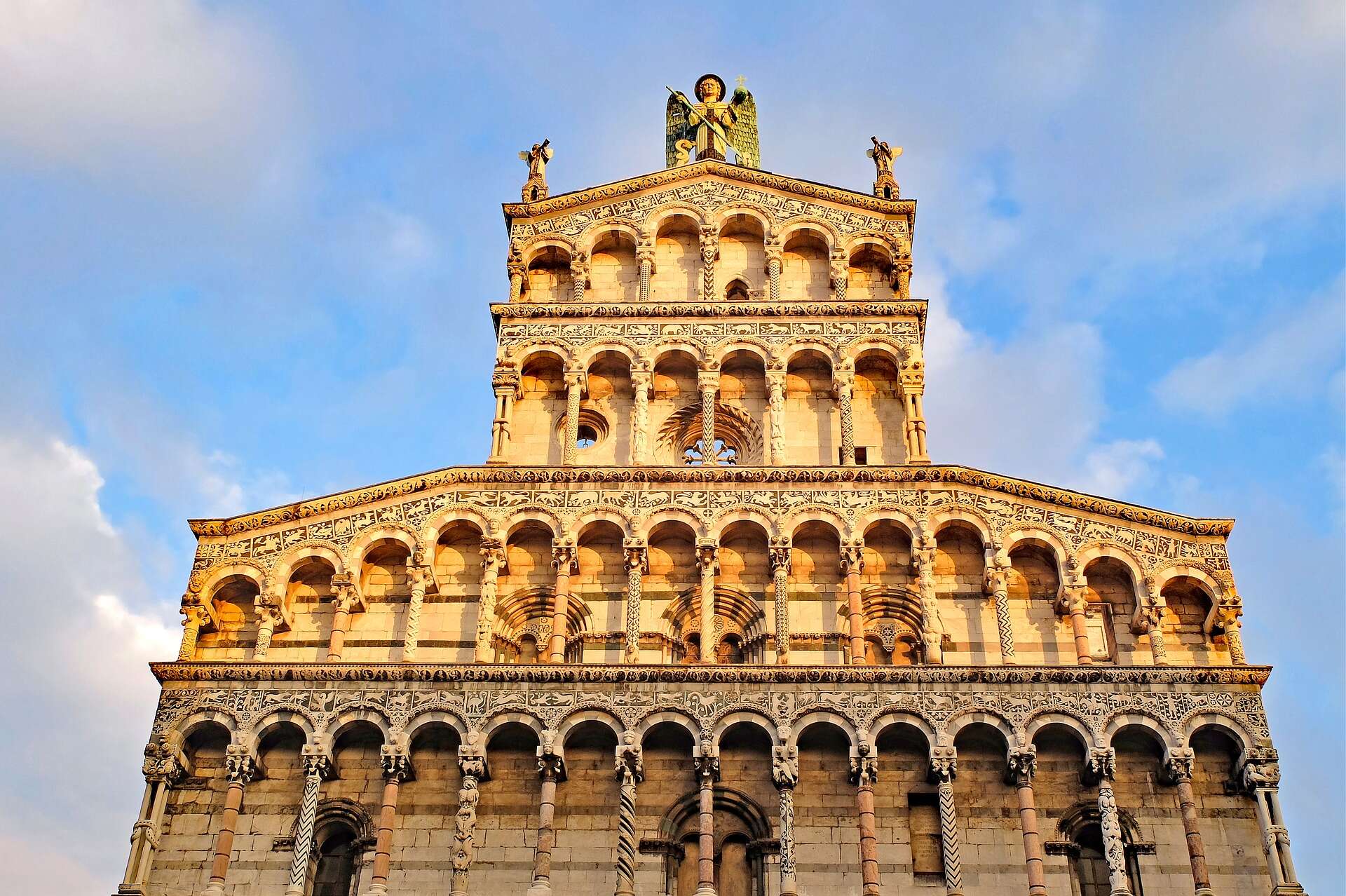Lucca's Duomo
The Duomo or Cattedrale di San Martino is one of the finest buildings in Lucca, not only because of its size and age but also because of how much of it has been preserved over the centuries. It looks absolutely stunning on the outside as well as inside and is considering a true wonder in Italy.
A unique example of Gothic style
The cathedral was started in 1063 by bishop Anselmo da Baggio (future Pope Alexander II). The original Romanesque facade was scrapped by Zaccaria from Como in 1204. It was later replaced in the 14th century with a Gothic one. A few traces of it remain a sculpted relief of Saint Martin sharing his cloak with a beggar (which can be seen inside the cathedral), and two round-headed windows on either side of the portal. These were incorporated into the new facade design.
Despite the changes over time to its facade, the cathedral still retains its original structure and represents a unique example of the Pisan-Lucchese Gothic style.
Magnifient beauty inside
The interior has three naves with columns of white marble and green serpentine and 42 granite columns with Oriental capitals. Inside, you can admire the exquisite mosaic pavement dating back to 1123 and depicting animal, floral and geometric motifs. The apse houses a fragment of a Byzantine mosaic (Christ between St John and St. Paul). In front of it is an altar made of Seravezza marble by Matteo Civitali, Lucca's greatest sculptor. It shows Madonna sitting on a throne, holding baby Jesus on her lap while looking heavenwards to God. On each side of the throne are six saints.
The facade is adorned with sculptures and reliefs that span the 13th and 14th centuries. The central rose window dates back to the 14th century, while the two side windows are 16th-century additions, as is the marble portal.
Its interior is striking, especially its ceiling frescoes by Luccan painter Matteo Civitali and an impressive sarcophagus with an effigy of Ilaria del Carretto by Jacopo della Quercia.













